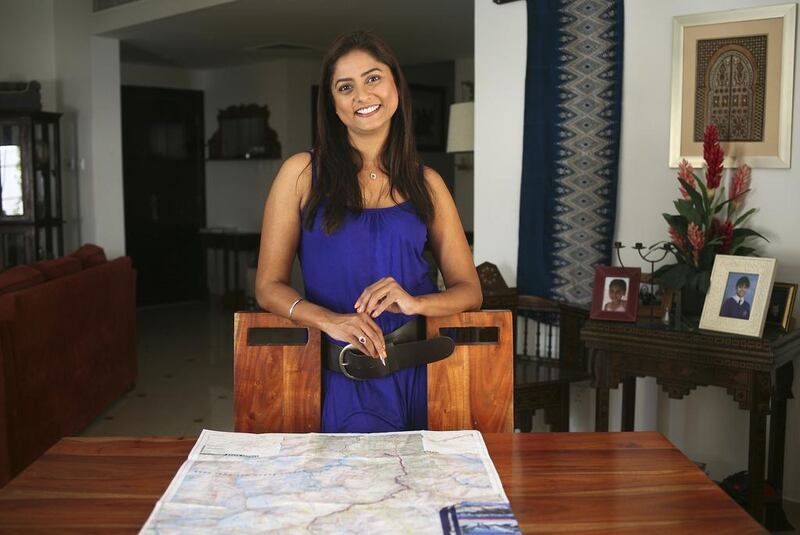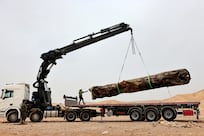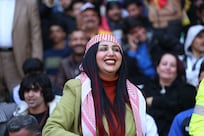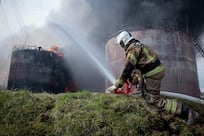DUBAI // One month on from the killer earthquake that ripped apart communities in Nepal, recovery work continues, but a return to normality remains distant for many.
Taran Vernon, a mother of two in Dubai, was trapped in the chaos on a trip of a lifetime to Everest Base Camp.
She described the “thundering noise” when the quake struck, how “rocks were crashing around near by” and how she thought she was going to die.
Mrs Vernon was due to visit a 45-bed Nepalese children’s orphanage for which she had raised Dh20,000 via the Dubai charity Gulf for Good.
Joining a team of nine walkers, she was to spend a week gradually ascending for six hours a day to acclimatise to the altitude. Six days into the walk, the 7.8-magnitude quake hit.
“When the earthquake happened, the mountains were moving,” said the former Gems school registrar.
“We were so exposed on a steep mountain trail I thought I was going to die.”
The team had been making gradual progress towards Namche Bazaar, a bustling mountain village at an altitude of 3,445 metres, packed with tourists and locals preparing for Everest expeditions. The quake struck just before noon on April 25.
“I balanced myself as the ground was shaking. It was terrifying and I began praying,” the British expatriate said.
“It went on for about 45 seconds. It was like the whole world was moving. A thundering noise came from above, like a roar, but I had no idea where it was coming from.
“Rocks were crashing around near by but I had nowhere to go. There was nothing to stop anything falling on me and I was near a steep drop.”
Mrs Vernon’s Nepalese tour leader called for the walkers to hurry towards a safer, open plateau, a memorial park for climbers who had died on the mountain.
A call was then made via satellite phone to the Gulf for Good head office to notify the walkers’ families that they were unhurt. After hiking to the nearest settlement, the small village of Labouche, it was there that the scale of what had happened became clear.
“It was devastating,” said Mrs Vernon. “Buildings were left in rubble, most of the small village had been damaged.
“It was terrifying but the shock took over. The village was heaving with people, no one knew what to do. I thought about my children and that it was the end.
“The tremors were continuing every half hour, we feared another big one was due. We felt another 600 tremors before we arrived back in Kathmandu.”
Tour leaders decided to descend the mountain as quickly as possible to their starting point of Lakla. Monasteries and settlements the team had passed just days earlier were reduced to rubble.
The descent was treacherous as rockfall had blocked some of the trail but the journey took just two and a half days because of their eagerness to reach safety. In Lukla, the group joined hundreds of others waiting to catch flights to Kathmandu.
They waited two days, finally flying back to the Nepali capital and then Dubai on April 29.
Mrs Vernon’s daughters, Simren, 15, and Amrit, 11, were waiting for her at their Al Waha home.
“I jumped into my daughter’s bed and hugged them both,” she said. “I knew I was so lucky to survive, but also there were many others who had been left behind or couldn’t get on a plane.
“I have to deal with that guilt. Getting back to normal life has been difficult, it has felt like a dream.”
Gulf for Good’s Mission Himalaya project had Mrs Vernon and the other participants collect sponsorship to be used to develop the Eco Children’s Farm Home, a self-sustaining centre for up to 45 Nepalese orphans.
On Monday night in Kathmandu, hundreds of people held a candlelight vigil to mark the one-month anniversary of the devastation that killed nearly 8,700 people and injured 16,800.
In the afternoon, about 400 people had joined hands to form a human chain around the site where Dharahara tower stood.
The collapse of the historic tower crushed at least 60 people.
nwebster@thenational.ae
* Additional reporting by AP







